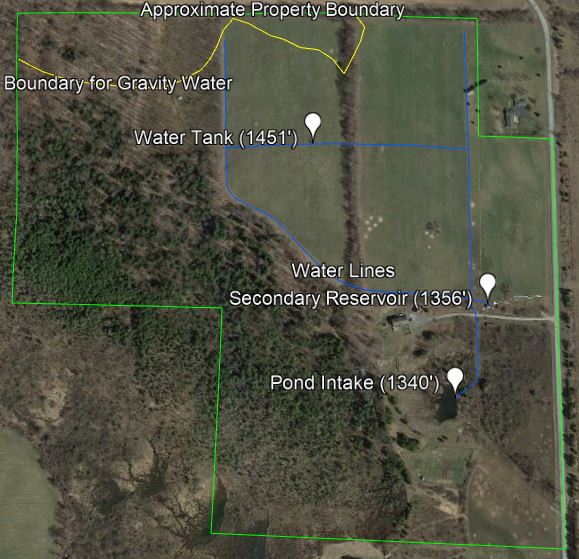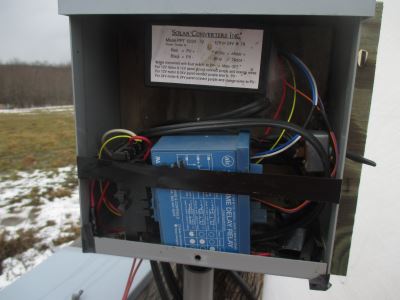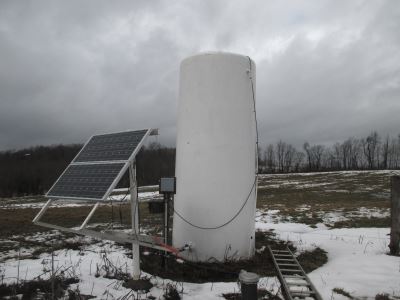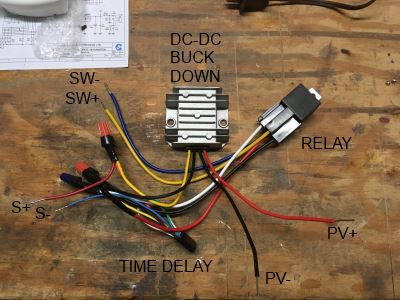Pump Burnout Preventer
Introduction

Iron Rod Farm has a gravity-fed, solar-powered water system to supply water for the beef cattle on the farm. It is composed of two 18V, 95W solar panels, a pump controller, a DC pump in a 100’ well, and a 2000 gallon water tank. It’s a pretty simple system - when there is enough voltage on the panels, the pump fills the tank. When the sun is strong, extra voltage is converted by the controller into additional current, leading to higher flow. There is no battery system required, as the water tank is basically the ‘battery’ of the system. Water flows from the tank through a network of irrigation tubing and valves to reach a small water tub with a float valve, giving the cattle constant, dependable access to water almost anywhere on the property.
Project

One issue with the system is that in the late summer there are often times when the well runs dry, leaving the pump nothing to pump. I originally (2012) installed a time-delay relay and down-hole sensor which would stop the pump if the well ran dry, and keep it from running until the sensor had been wet for 30 minutes. This prevented the pump both from running when dry and from cycling too often at a low-water condition.

However, this system did require a separate 24V supply. The solar panels ran at a much higher voltage, and, although the pump ran on 24V, if the timer shut off the pump, it would cut its own supply, and also lacked the proper relay to shut off just the pump. Therefore, it ran on 4 6V lantern batteries, which lasted for one season (one summer). However, this was somewhat inconvenient, and didn’t make much sense, as the rest of the system was maintenance-free.
It also incurred a $15-$25 battery fee each year.

Therefore, in 2017 I used the additional knowledge I had gained in electronics to design and install a better system, one which would require no maintenance. The image to the left is the components wired up for installation. This system is capable of running off of the solar panels (PV+ & PV-), takes in the down-hole sensor state (S+ & S-), and outputs a ’tank full’ signal to the pump controller (SW+ & SW-) for the duration of the time delay.



